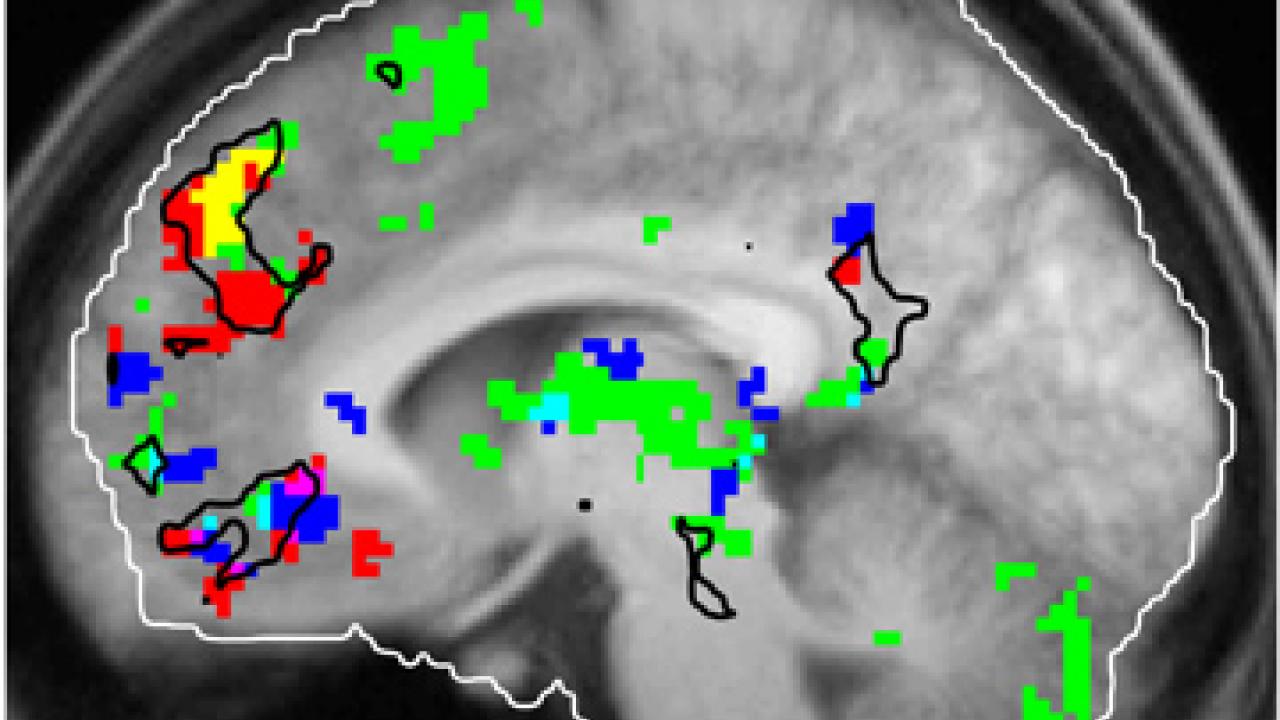We all know the feeling: A golden oldie comes on the radio and suddenly we are transported back — to a memorable high school dance or that perfect afternoon on the beach with friends. But what is it about music that can evoke such vivid memories?
By mapping the brain activity of students while they listened to music, a UC Davis researcher thinks he came up with the answer: The region of the brain where memories are supported and retrieved also serves as a hub that links familiar music, memories and emotion.
The discovery may help to explain why music can elicit strong responses from people with Alzheimer’s disease, said the study’s author, Petr Janata, associate professor of psychology at the Center for Mind and Brain. The hub is in the medial prefrontal cortex region (right behind the forehead), one of the last areas of the brain to atrophy over the course of Alzheimer’s.
One of his long-term goals is to use his research to help develop music-based therapy for people with the disease. “Providing patients with MP3 players and customized playlists,” he said, “could prove to be a quality-of-life improvement strategy that would be both effective and economical.”
The study is available now on the journal Cerebral Cortex’s Web site, and is due for publication in the journal’s print version later this year.
Earlier work of Janata’s documented that music serves as a potent trigger for retrieving memories. To learn more about the mechanism, he enrolled 13 students to listen to 30 tunes through headphones while he used functional magnetic resonance imaging, or fMRI, to record each student’s brain activity. He chose songs randomly from “top 100” charts from years when each subject would have been 8 to 18 years old.
Follow-up surveys revealed that the students, on average, recognized 17 of the 30 excerpts, and that for each student, on average, 13 of the recognized tunes triggered moderate or strong associations with autobiographical memories.
By comparing these self-reported reactions with each student’s fMRI images, Janata confirmed his hypothesis about the brain’s hub for music, memories and emotion.
Another discovery, however, sealed his conclusion.
Janata, a lifelong music buff, had earlier created a model for “mapping” the tones of a piece of music as it moves from chord to chord and into and out of major and minor keys. By making tonal maps of each musical excerpt and comparing them to their corresponding brain scans, he discovered that the brain was tracking these tonal progressions in the same region as it was experiencing the memories: in the dorsal part of the medial prefrontal cortex, and in regions immediately adjacent to it. And in this case, too, the stronger the autobiographical memory, the greater the “tracking” activity.
“What’s cool about this is that one of the main parts of the brain that’s tracking the music is the same part of the brain that’s responding overall to how autobiographically salient the music is,” Janata said.
Media Resources
Dave Jones, Dateline, 530-752-6556, dljones@ucdavis.edu
